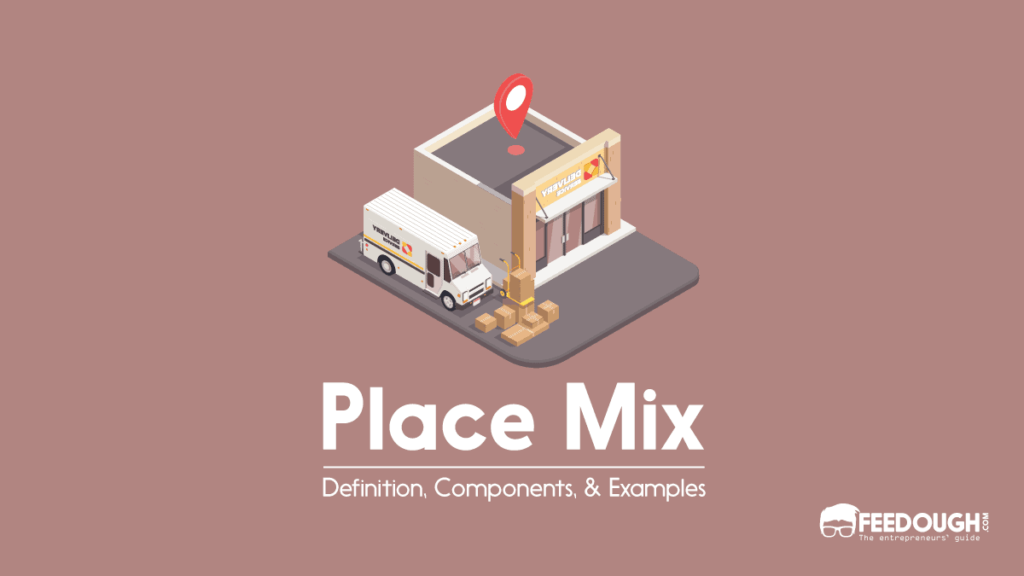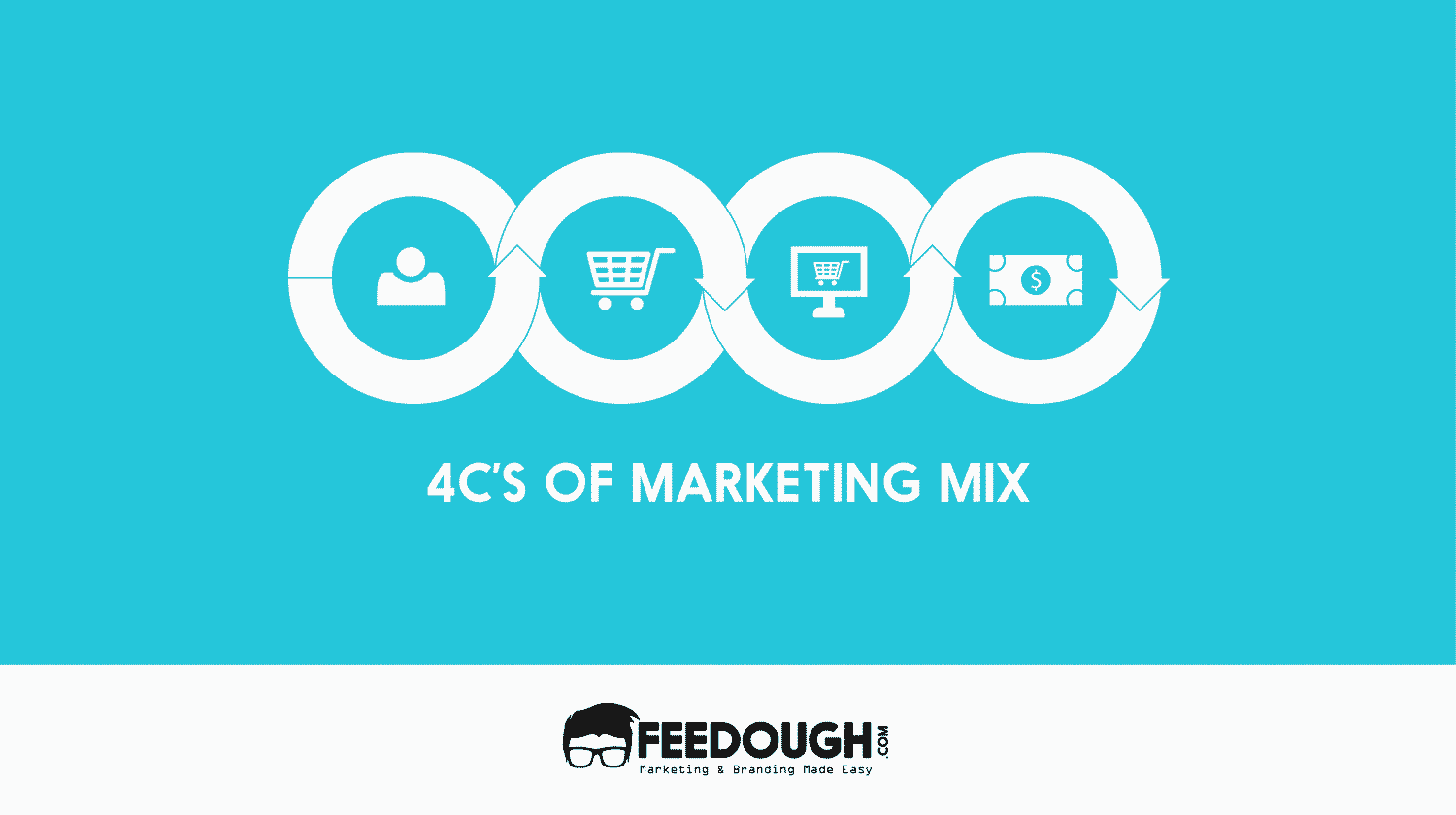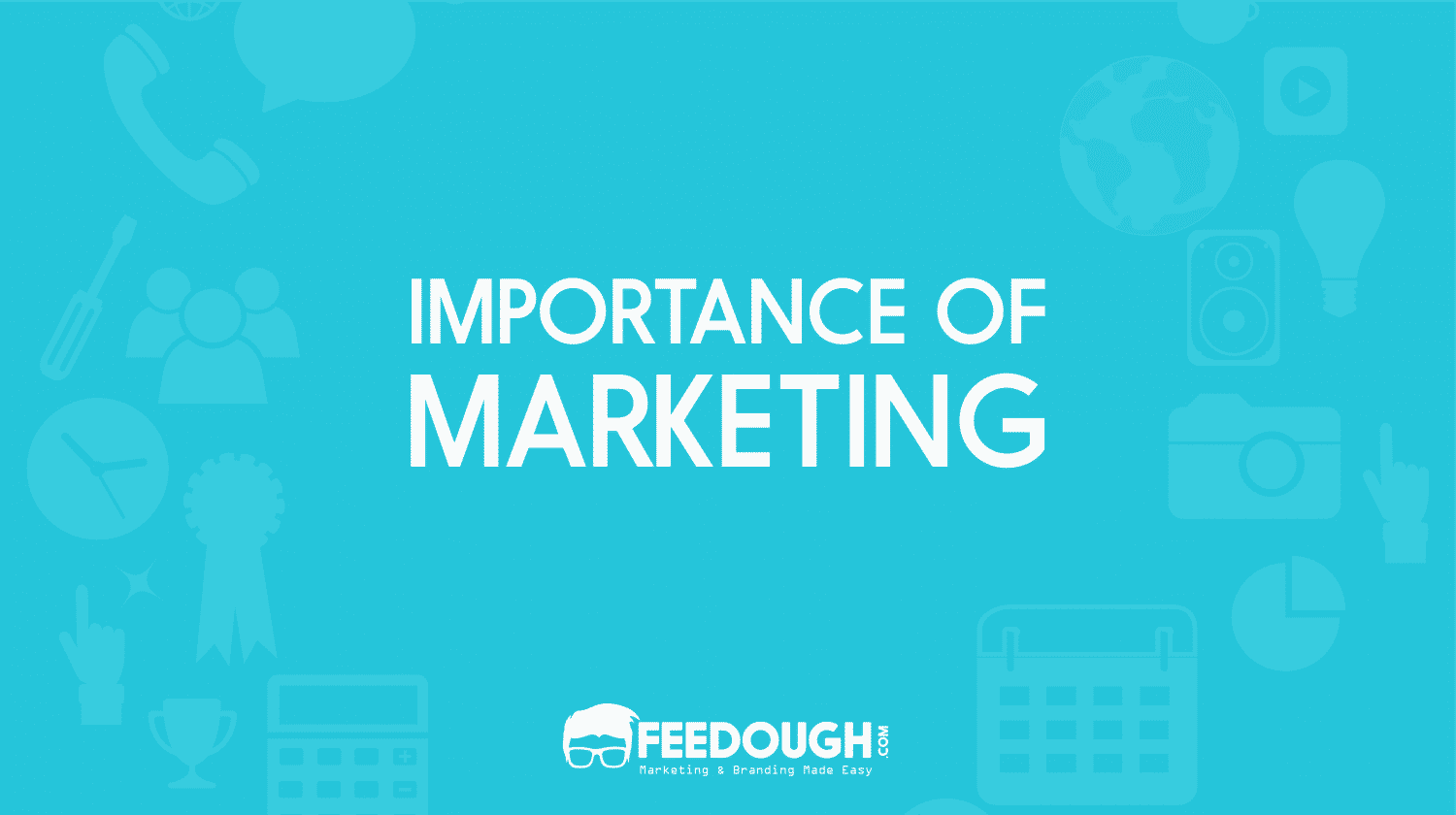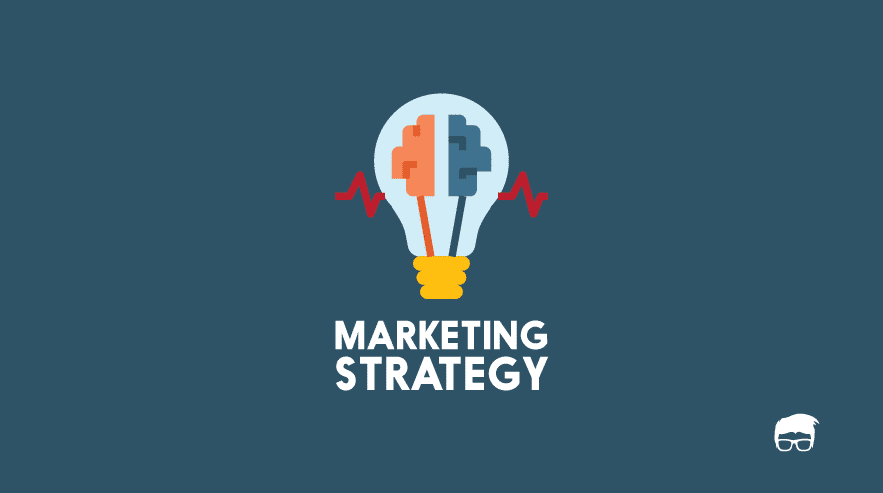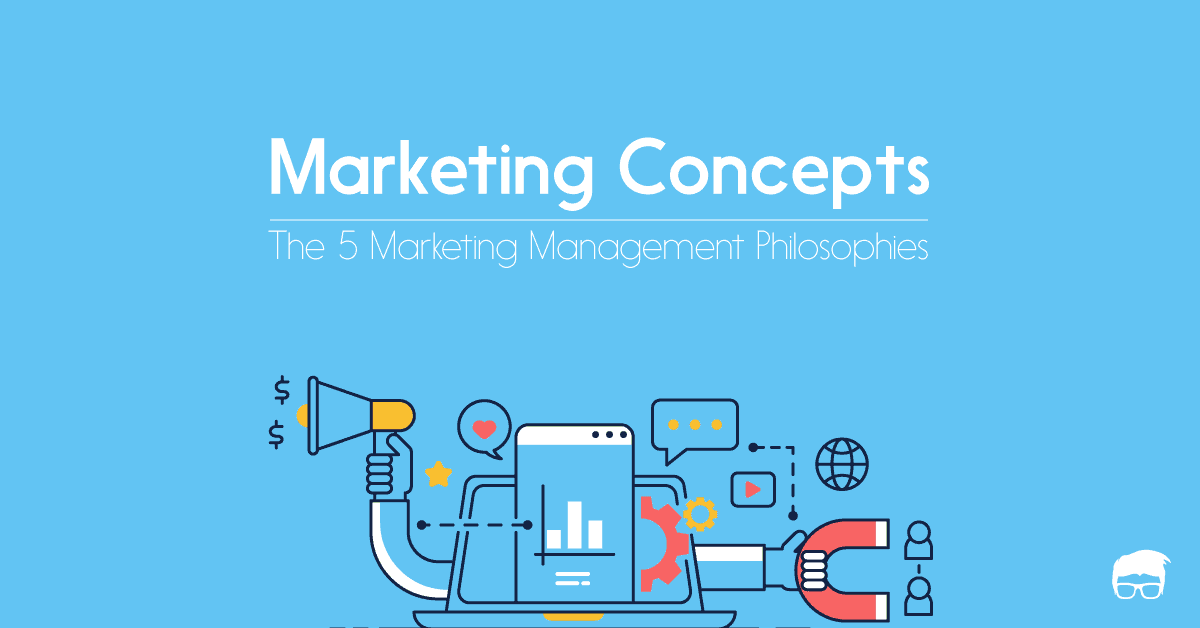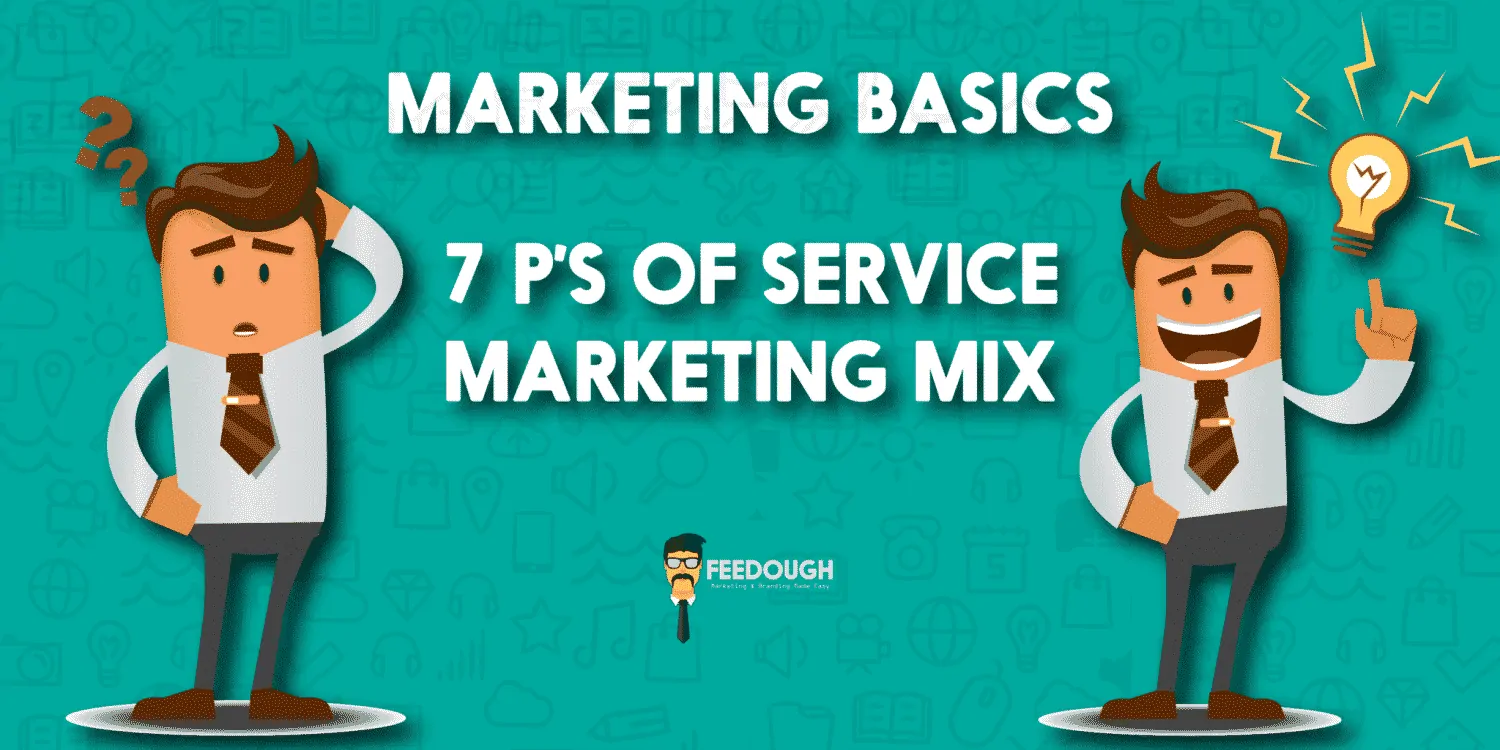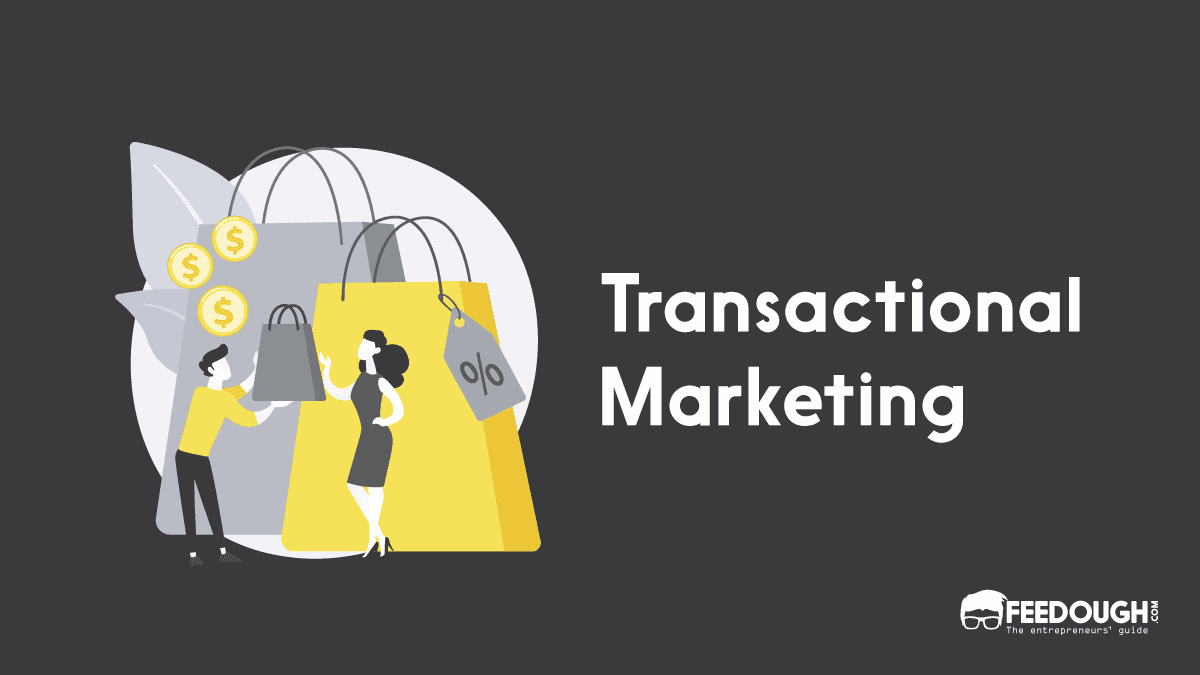It’s one thing to have a fantastic product at a reasonable price. But, it means moot if the customers are unable to locate your product conveniently. So, until manufacturers have a proper channel and strategy to make the product available for purchase in the consumer market, they will not be able to drive sales and profit.
This is where the concept of place in the marketing mix comes into the picture.
Place mix is the fourth ‘P’ in the marketing mix, and is highly significant, as marketing objectives can only be realised when items readily reach the customer. Even though it is pretty straightforward, in practice, it covers many areas and domains, including channel distribution, its types, distribution strategies, transport, storage, and inventory management.
What Is Place Mix?
Place mix or distribution mix is an arrangement of channels, both physical and non-physical, through which the product is made available to customers for purchase.
It is the set of decisions a company undertakes to make the product accessible to its target customers conveniently in the most cost-efficient manner.
In layman terms, the place is all about decisions regarding the distribution channels and physical movement of goods. It’s about making available the right product with the right approach, in the right spot, at the right time, in the right form, and to the right customers.
Thus, it aims to reduce the gap between the producers and the customers by concentrating on the location of the business, the destination market, connecting both, and transporting them at the end of the day.
The Importance Of Place Mix
The place mix accounts for a significant area in the marketing mix and is vital to the overall business strategy. It is focused on ensuring that everything falls into its right place and all the processes flow smoothly.
Introducing an inappropriate place mix has the potential of affecting business adversely by:
- Increasing complexity and cost of operations
- Reducing flexibility and agility
- Increasing operating costs significantly
Businesses may charge distorted prices from the customers due to less competition in certain areas, sparse distribution coverage, etc
These problems can become a serious concern for businesses with limited budgets and resources. Thus, it is crucial to consider the right channel of distribution before it’s too late.
Place Mix Components
The place mix is made up of two major components that can help a company meet its distribution goals and business targets. They are:
- Physical Distribution
- Channels Of Distribution
Physical Distribution
Physical distribution (P.D.) is a set of activities concerned with the efficient physical movement of goods from the producer to the consumer. It is an important aspect of marketing and a significant part of the place mix. It includes the four major activities like order-processing, transportation, warehousing and inventory control.
Order-Processing
It is the first step in any distribution process. Receiving the order, packaging it, and shipping it is all part of the procedure.
So, once a customer orders a product, it is isolated from the bulk stock and labelled for that specific customer. Following that, the goods are packed and dispatched.
The most important fact to note is that there’s a direct relationship between the time taken in order processing and the customer’s satisfaction. This is because each customer expects that their order is implemented without delay and as per the order’s specifications.
Transportation
As part of physical distribution, transportation is crucial for the company as it facilitates the movement of goods from one place to another. Transportation decisions include the mode of transportation to be utilised, whether to own or hire vehicles, how to schedule delivery, and who will shoulder the expense of transportation.
The several forms of transportation are roadways, railways, waterways, airways, and pipelines. The various factors that influence the choice of a particular mode of transportation are the cost of transportation, availability of the mode of transportation, speed, reliability, frequency, safety, and suitability of the mode to transport the product. A company usually chooses a combination of the mode of transportation.
It is vital to remember that the mode of transportation chosen impacts the condition of the goods and their pricing, which in turn has an impact on customer satisfaction.
Warehousing
Warehouses are the locations where items are stored for a period of time. Thus, goods are temporarily kept in warehouses and released as and when they are needed. Warehouses are required as there’s a significant time gap between production and distribution, and some commodities are seasonal in nature.
The warehouses undertake various tasks in addition to storing items, such as marketing and assembling them. Thus, there are two kinds of warehouses: storage warehouses and distribution warehouses. Storage warehouses aid in the storage of goods for long and medium periods of time to ensure supply and demand are in sync. Whereas distribution warehouses make it easier to assemble products and resell them promptly.
Inventory Control
The term “inventory control” relates to the efficient management of products stored in warehouses. Inventories serve as a reservoir for commodities held in expectation of a sale. Also, it has a cost and can affect the entire business. Thus, it must be effectively handled and regulated. There should be no inventory that is either too small as it would result in stock out, resulting in lost sales or too large as it would entail hefty investments. As a result, a balance must be maintained.
Channels Of Distribution
Channels of distribution refer to the various essential linkages between manufacturers and intermediaries and end-users involved in the firm’s distribution network.
It’s the network of individuals and institutions that helps to establish frequent contact with the customers and offer the required information about the items to the customers.
In addition to this, a distribution channel assists in financing by providing credit and helps in after-sales services. Thus, it’s that one entity that undertakes all risks related to the performance of the distribution function.
Types of Channels of Distribution
The distribution channels can be divided into four categories: direct, indirect, dual and reverse. However, direct and indirect distribution channels are most commonly used. In addition, indirect channels are categorised into one-level, two-level and three-level according to the number of intermediaries between manufacturers and customers.
Direct Channel or Zero-Level Channel
It is one of the oldest forms of selling. Here, the manufacturer directly sells to the end customer with no intermediaries involved; thus, it is also called a zero-level channel.
Since the manufacturer has one-to-one interaction with its customers, and it has complete control of the product, its image, and its user experience at all phases. Generally, manufacturers who offer perishable, expensive, and geographically focussed goods employ this distribution channel, such as consulting organisations, bakers, and jewellers.
This distribution channel can take various forms. The most frequently used are:
Direct mail
It is one of the most common direct distribution strategies. It covers a variety of mails, such as envelope mailers, newspapers, sales letters, catalogues, brochures, postcards, and so on. Under this, direct mails are sent to the consumer’s address.
Online sale
It is a part of the global internet network, also referred to as I-marketing, web-marketing, e-marketing or e-commerce. Under this, an enterprise sells its items via the internet and quickly receives its bill. It has emerged as one of the most popular modes of sales and has swept off the requirement for intermediaries.
Personal selling
Personal selling is when the manufacturer and the customer has personal communication regarding the sale product or service.
Indirect Channels
In this method, intermediaries are involved to ensure that the goods are available in the consumer market. It is the most effective means of distribution and is used to promote apparel, machines, automobiles, furnishings etc.
However, before getting into the various types of indirect distribution, let’s understand the primary job of each intermediary.
- Agents: An agent is a direct market representative of a company to the user. An agent does not own the product and normally earns money from commissions and fees paid for his services. Their job is to make selling and buying arrangements between manufacturers and retailers, and other wholesalers. For example, for each booking made with an airline or hotel operator, travel agents are paid a commission of roughly 15%.
- Wholesalers: A wholesaler is a commercial intermediary, who primarily sells for business purposes to retailers, other traders and industrial, institutional and commercial users. They seldom sell to an end consumer directly. Wholesalers buy items in bulk from a manufacturer and store them in storage facilities. Wholesalers have their warehouse, transportation and contemporary means of communication.
- Retailers: A retailer is an individual who buys a range of commodities from several wholesalers in small quantities and sells them to the end consumer. The retailer is the last link in the distribution chain between the producer and the consumer.
Now, let’s discuss the tiers of distribution within an indirect channel that depends on the number of intermediaries involved in the distribution process.
One-level channel
Here, only one intermediary (retailer) is involved; thus, it’s called a one-level channel. So, the manufacturers sell their products to retailers who sell them to customers.
Manufacturers of shopping goods like toys, apparel or furniture utilise this kind of distribution channel.
Two-level channel
Here, two intermediaries (wholesalers and retailers) are involved; thus, it is called a two-level channel. The wholesalers usually buy in bulk from the manufacture, divide the items into smaller proportions, and then sell them to the retailers. The retailers then sell the products to their final purchasers.
This channel is used for consumer goods that have customer demand from a wide range, and the purchase frequency is high.
Three-level channel
Since three intermediaries (agent, wholesaler and retailer) are involved in this channel, it is called a three-level channel. Here, the producer deals with an agent, and then the wholesaler buys from an agent and sells them to retailers who sell it to the end-user.
The three-level channel is used in international marketing, where marketers deal with local wholesalers in the world market. Due to differences in language and customs, companies hire local agents to deal with local wholesalers and thus sell their products.
Dual Channels
In this type of channel, a manufacturer may utilise a combination of both direct and indirect distribution channels; that is, the marketing arrangements are made such that manufacturers simultaneously employ more than one channel to reach end-users.
An example of dual distribution is business format franchising where franchisors licence certain units to franchisees to operate while at the same time owning and operating specific units themselves.
Reverse Channels
In the first three types, the product reaches the end-user. However, the direction changes in the reverse distribution channel; that is, it goes in the reverse direction – from consumer to intermediary to the manufacturer.
One example is when consumers sell waste to companies for recycling. Like, Goodwill uses the reverse distribution channel when it resales the donated products.
Factors Affecting Channels Of Distribution
Choosing the right distribution channel is crucial as both the price and promotion strategy depend on the selected chosen channel. For instance, the pathway from the production to the customer also contains various costs that influence goods prices and profitability. Thus, a manufacturer should consider the following factors while selecting a channel of distribution.
Nature Of Product
For perishable items such as foods or vegetables, short or direct channels are required as their delivery can be delayed if a manufacturer chooses a long channel with numerous intermediaries. In the case of most consumer goods, a long channel including agents, wholesalers and retailers is utilised as many people buy them more frequently and in smaller quantities. On the other hand, a smaller number of purchasers buy industrial items in larger numbers less regularly. Thus, these items require short distribution channels.
Nature Of Market
The number of consumers and their geographical concentration determines the choice of the channel structure. For instance, while catering to the consumer market, intermediaries like retailers are vital, whereas retailers can be eliminated in the business market.
Also, fewer customers need a short channel of distribution while numerous customers require a long distribution channel. Meanwhile, customer dispersion also plays an important role. If the target audience is scattered over a broad range, then a long channel structure is necessary; if not, then a short channel structure.
Nature Of Company
When selecting a distribution channel, a corporation must look within itself and comprehend itself. For instance, the company impacts the market size, size of its major accounts and its ability to establish cooperation between intermediaries. Thus, a prominent business can have a shorter channel. Also, a financially strong corporation can negotiate and set up an entirely new distribution channel. However, a company that isn’t financially stable has to be satisfied with the existing distribution channel as it takes enormous sums of money to build a new distribution channel. As far as control is concerned, a corporation that wants to control the channel will want to have a shorter channel because it will make better coordination, communication and control easier.
Intermediaries Consideration
The manufacturer must select the intermediaries that offer the most outstanding marketing services such as storage, shipping, credit and packing. This is because if there are proper intermediaries with the required experience, connections, financial power and accuracy, they can guarantee the success of new products.
Environment Consideration
Each organisation should comply with legal rules and its activities should not contravene the law. So, while choosing a distribution channel, every corporation should pay attention to government rules and regulations. Also, any distribution channel should not conflict with social standards and values; thus, the distribution channel should be amicable with the social environment. Additionally, the economic conditions also affect the selection of the channels of distribution. When the economy is robust, a corporation can use the long distribution channel with various intermediaries. However, the corporation should choose the quickest and cheapest means of distribution if there are many fluctuations in the economy.
Distribution Strategy
A distribution strategy is about selecting the right channels that result in the most convenient flow of products to customers. Thus, it is important for a manufacturer to form contacts with potential intermediaries and identify their requirements for marketing. Then, the best channel structure should be chosen among them to benefit both parties.
A company employs different strategies for different types of products. The following are the three strategies that most companies use:
Intensive Distribution
This strategy is also known as mass distribution as it guarantees that the product or service will be distributed as widely as possible. Clearly, this is the most popular way by which large companies or manufacturers can reach customers nationwide or even globally. For example, essential supplies or regular products or items like chocolates or mint, are effectively supplied under this distribution method.
Selective Distribution
Under this strategy, a product is sold at a select number of outlets. Simply put, it’s a technique employed for the sale of high-quality products only by retailers. In comparison to intensive distribution, it is easier to form consumer relationships with this distribution technique.
Some of the prestigious cosmetics and skincare brands, such as Estee Lauder, Jurlique and Clinique, insist on the training of salespeople to utilise the range of products. Only trained clinicians can sell their items by the manufacturer.
Exclusive Distribution
This technique limits the distribution of your products to only one retailer; that is, a manufacturer works with an intermediary or one type of intermediary in an exclusive distribution method.
The exclusive advantage is that the manufacturer maintains more control over the distribution process. This works well with speciality products that the retailer can portray as prestigious because they are the only supplier and the only retailer. For instance, expensive brands like Gucci makes use of this strategy.
Place Mix Examples
Ranked as the number 1 brand in 2016, Apple Inc. is the world’s largest information technology corporation with the highest revenue per employee as compared to other leading technology companies. One of the contributing factors that led to this immense success was the company’s unique distribution approach that meets clients’ needs while also increasing brand awareness on a global scale.
For instance, Apple came up with the notion of having its own retail shops, or Apple stores, to sell its products exclusively. The main factor in these stores is that the staff is more helpful because Apple’s operating system is highly complex, and it may not function as any regular operating system. As a result, consumers require assistance in fully comprehending the product. That is why, in an Apple store, there are more “advisors” than “sellers.”
Apple also introduced the idea of trade partners to sustain the distribution chain. Ingram Micro is one of Apple’s trade partners, and it handles distribution in several countries. The fundamental strategy is maintaining fewer trade partners is that gives the advantage of less distribution hassle, allowing it to focus more on R&D.
Subsequently, the trade partners then sell through handpicked, authorised retailers who are allowed to sell Apple products. Thus, the distribution channel is niche due to the premium model of the product, and the product is supplied only to premium retailers who can satisfy the company’s aims.
Another crucial sales channel for the company is ecommerce, as well as its own portal from which it offers a variety of products. Most ecommerce portals have a separate page linked on the home page itself for Apple and its products, which shows the power of the company.
Go On, Tell Us What You Think!
Did we miss something? Come on! Tell us what you think about our article on what is place mix in the comments section.
An avid reader and economics enthusiast who is always eager to learn. Prachi is an aspiring leader who believes in what she does. Besides reading , she is fond of baking , dancing and travelling.
